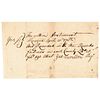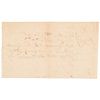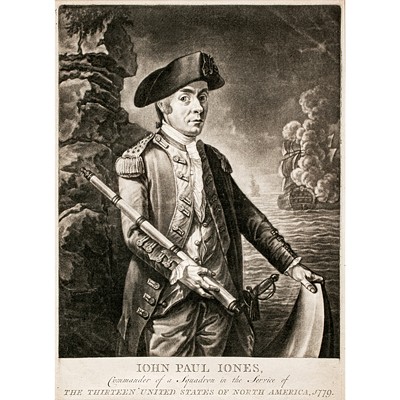1738 Manuscript Document Signed By JEREMIAH MOULTON Member Mass. Council
Lot 38
Categories
Estimate:
$350 - $450
Absentee vs Live bid
Two ways to bid:
- Leave a max absentee bid and the platform will bid on your behalf up to your maximum bid during the live auction.
- Bid live during the auction and your bids will be submitted real-time to the auctioneer.
Bid Increments
| Price | Bid Increment |
|---|---|
| $0 | $10 |
| $200 | $20 |
| $300 | $25 |
| $500 | $50 |
| $1,000 | $100 |
| $2,000 | $200 |
| $3,000 | $250 |
| $5,000 | $500 |
| $10,000 | $1,000 |
| $20,000 | $2,000 |
| $30,000 | $2,500 |
| $50,000 | $5,000 |
| $100,000 | $10,000 |
| $200,000 | $20,000 |
| $300,000 | $25,000 |
| $500,000 | $50,000 |
About Auction
By Early American History Auctions
Jan 23, 2021
Set Reminder
2021-01-23 12:00:00
2021-01-23 12:00:00
America/New_York
Bidsquare
Bidsquare : Early American History Auction of Autographs, Americana, Political & Maps
https://www.bidsquare.com/auctions/early-american-history-auctions/early-american-history-auction-of-autographs-americana-political-maps-6311
311 Lots of Rare, Historic Autographs, Americana, Civil War Era, George Washington, Abraham Lincoln, Slavery & Black History, Revolutionary War Era, Colonial America, Federal Period, War of 1812, Colonial Currency, Indian Peace Medals & more... Early American History Auctions auctions@earlyamerican.com
311 Lots of Rare, Historic Autographs, Americana, Civil War Era, George Washington, Abraham Lincoln, Slavery & Black History, Revolutionary War Era, Colonial America, Federal Period, War of 1812, Colonial Currency, Indian Peace Medals & more... Early American History Auctions auctions@earlyamerican.com
- Lot Description
Autographs
1738 Jeremiah Moulton Manuscript Document Signed
JEREMIAH MOULTON (1688-1765). Indian Captive as a young boy, New England Militia Officer, Judge, Sheriff of York County, and Member of the Massachusetts Council.
April 20, 1738-Dated, Manuscript Document Signed, "Jer Moulton" as Registrar, 5" x 3", 1 page, York (ME), Choice Very Fine. Moulton attests that a deed has been recorded in the records of the County. During King George's War, Moulton, now a Colonel and one of New England's most experienced soldiers, once more saw active service; he commanded one of the three Massachusetts regiments in the Siege of Louisbourg (1745). Boldly and well written in his hand on clean period laid paper.
JEREMIAH MOULTON (1688-1765). As a boy, during King William's War, Moulton's parents were killed and he was taken captive in the Raid on York (1692). He was eventually released and served in Father Rale's War at Fort Richmond (Maine). Between 1721 and 1724 there were four attempts to capture the missionary Father Sebastian Rale; Captain Jeremiah Moulton played a prominent role in at least two of these, including the last, which succeeded, which is known as Battle of Norridgewock.
After this attack, Captain Moulton continued to take part in scouting expeditions. When the war was over, he remained a militia officer, but resumed his civil career. He became a Judge, Sheriff of York County, member of the Massachusetts Council, and holder of various other offices. He also developed farms and mills, and helped to found the town which later became Sanford, Maine.
During King George's War, Moulton, now a colonel and one of New England's most experienced soldiers, once more saw active service; he commanded one of the three Massachusetts regiments in the Siege of Louisbourg (1745).
In April 1745 he landed with the New England troops at Canso and went from there, leading a detached force of New Hampshire men, to capture and destroy Port-Toulouse in early May. He sat regularly with the council of war at Louisbourg and stayed on after the fall of the town to help with its occupation. He did not return to Maine until December 1745; shortly thereafter he was appointed judge of probate for York County.
He remained an active and respected citizen of York until his death in 1765. He is buried in the Old York Cemetery, York Village, York County, Maine.
- Shipping Info
-
Early American provides in-house worldwide shipping. Please contact us directly if you have questions about your specific shipping requirements.
-
- Buyer's Premium



 EUR
EUR CAD
CAD AUD
AUD GBP
GBP MXN
MXN HKD
HKD CNY
CNY MYR
MYR SEK
SEK SGD
SGD CHF
CHF THB
THB













